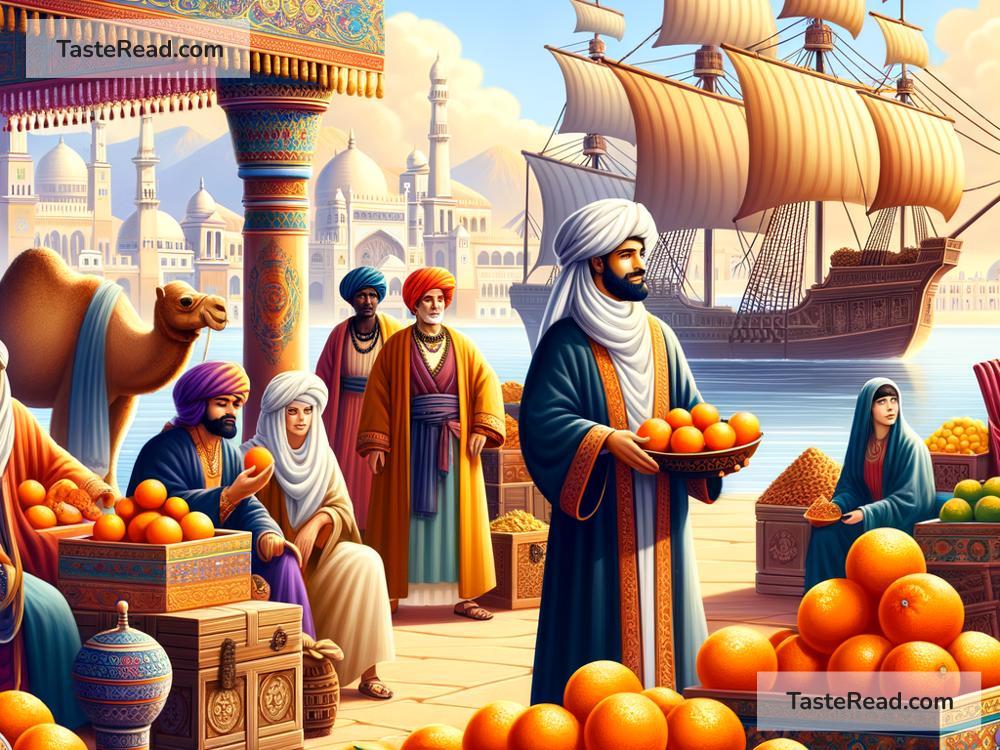The Hidden Story of Oranges in Ancient Trade Routes
When we enjoy a juicy orange today, we usually don’t think much about where it came from. Oranges are everywhere—sitting in grocery stores, packed in lunchboxes, and squeezed into refreshing juice. But many centuries ago, oranges were exotic treasures, traveling thousands of miles across ancient trade routes. Their journey is filled with surprises, showing us how connected the ancient world really was.
The Origin of Oranges: A Long, Winding Beginning
The orange, as we know it today, has its roots in Southeast Asia, specifically in regions that are now India, China, and parts of Vietnam. Wild citrus fruits, including early forms of oranges, grew widely in these areas thousands of years ago. Over time, humans began cultivating citrus fruits, creating sweeter and more delightful varieties.
Historians believe that the first forms of oranges—the bitter and sour types—were used more for medicinal purposes than eating. People in ancient times didn’t toss them into fruit salads; instead, they valued oranges for their healing properties. Chinese herbal medicine, for example, used various parts of the fruit, from its flesh to its peel, to treat digestion and respiratory issues.
So, how did oranges get from these early origins to becoming a beloved fruit worldwide? The answer lies in ancient trade routes—vast networks of travel and exchange connecting distant civilizations.
The Role of the Silk Road
The Silk Road wasn’t just about silk. It was one of the most important trade networks in history, stretching from China to parts of Europe, the Middle East, and North Africa. Along this route, merchants exchanged goods like spices, textiles, precious metals—and yes, oranges.
Travelers would bring oranges in the form of seeds, cuttings, or even actual fruits to distant lands. A Chinese official named Zhang Qian, often called the “Father of the Silk Road,” helped open these routes in the 2nd century BCE. While his focus was on trading silk, early forms of oranges likely started their cross-cultural journey during this time.
Imagine traders crossing vast deserts or winding through mountain paths, carrying bundles of small fruits and seeds. Along with silk and gold, they shared oranges with new civilizations, sparking curiosity and offering a taste of something foreign.
Oranges and the Middle East
The spread of oranges gained momentum when they reached the Middle East. Arab merchants were skilled farmers and knew how to cultivate new crops. During the Islamic Golden Age (roughly 8th–13th centuries CE), oranges became widely appreciated, thanks to advancements in irrigation and gardening techniques.
Arabic texts from this era mention the orange as a prized fruit. The Arabs were responsible for creating sweeter varieties that became incredibly popular. They brought orange cultivation to regions like Persia (modern-day Iran) and even into North Africa. Over time, oranges became linked to gardens and paradise, often planted in the courtyards of grand palaces.
Arabic traders carried oranges even farther west, introducing them to Europe through Spain. The Spanish name for orange, “naranja,” comes from the Arabic word “narang,” proof of its roots in Middle Eastern trade routes.
Oranges in Europe: A Royal Treat
When oranges reached Europe, they were still considered luxurious and rare. Most Europeans in medieval times never tasted an orange. Only the wealthy and powerful, like kings and queens, had access to this exotic fruit. Oranges often arrived from southern Spain or Italy, where the climate made it possible to grow them.
The discovery of sweeter orange varieties—such as the ones we know today—occurred during this period. These delicious fruits quickly became prized for their vibrant color, aroma, and flavor.
Sailors and explorers also began carrying oranges on ships to prevent scurvy, a disease caused by lack of vitamin C. This practical use boosted their popularity and further spread them across the globe.
The Global Spread: Oranges Everywhere!
During the Age of Exploration (15th–17th centuries), oranges found their way to even more places. European sailors introduced oranges to Africa, the Americas, and beyond. Spanish settlers planted orange seeds in the Caribbean and South America in the early 1500s. Central and South America’s warm climate proved perfect for growing oranges, and within a few decades, the fruit thrived.
Oranges also made their mark in Florida, which is now one of the world’s largest producers of orange juice. The orange trees we associate with Florida today actually started from seeds brought by Spanish explorers in the 16th century.
Why Oranges Matter
The story of oranges is about more than fruit. It’s about trade, exploration, and human connections. Ancient trade routes allowed oranges to move across continents, linking distant civilizations with one another. These small, golden fruits carried culture and knowledge wherever they traveled.
Even though we now take oranges for granted, their history shows us that behind many everyday things lies a fascinating story. The humble orange reminds us of the ingenuity of ancient traders, farmers, and explorers who shaped the global world we live in today.
So, the next time you peel an orange, think about its incredible journey. The fruit that started in Southeast Asia traveled thousands of miles over the centuries, crossing deserts, mountains, and oceans, to end up in your hands. What an amazing adventure for such a simple fruit!


